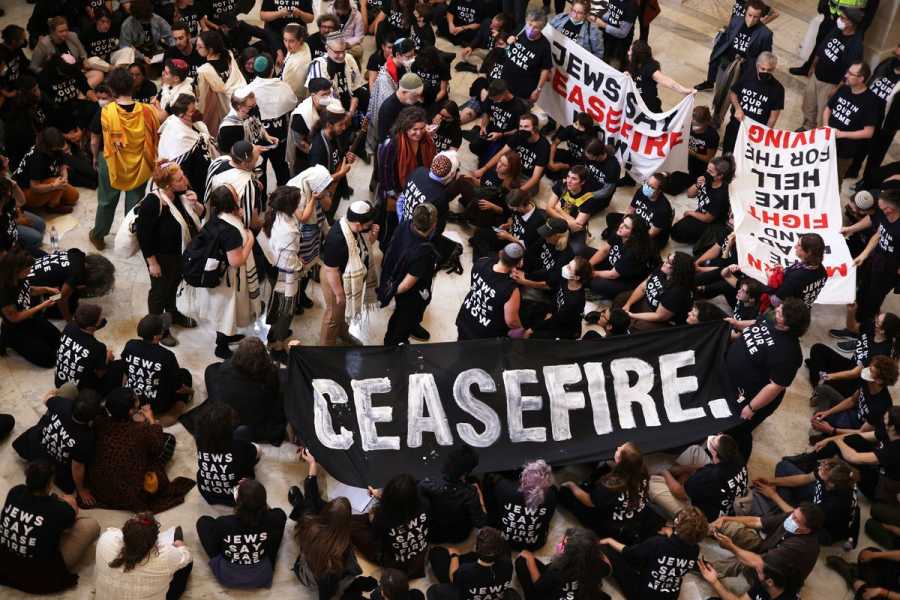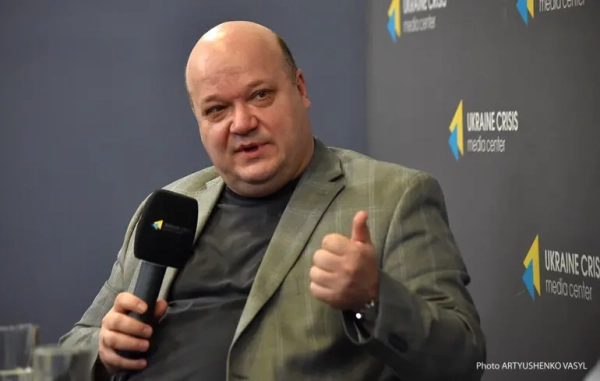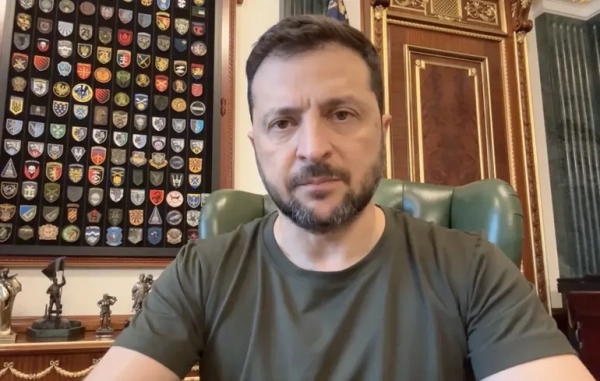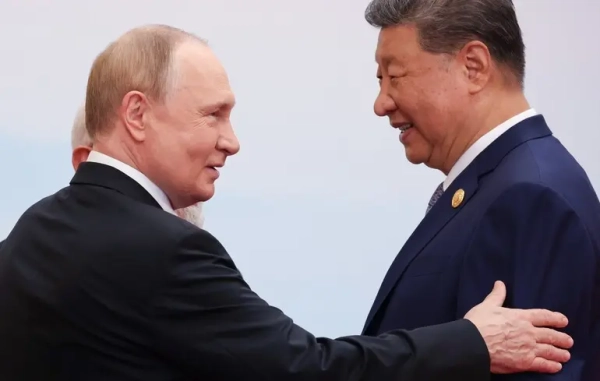In recent weeks, tens of thousands of people have marched in rallies across the world.

Protesters stage a demonstration in support of a ceasefire against the Palestinians in Gaza in the Cannon House Office Building on October 18, 2023 in Washington, DC. Members of the Jewish Voice for Peace and the IfNotNow movement staged a rally to call for a ceasefire in the Israel–Hamas war. Alex Wong/Getty Images Li Zhou is a politics reporter at Vox, where she covers Congress and elections. Previously, she was a tech policy reporter at Politico and an editorial fellow at the Atlantic.
In light of the growing humanitarian crisis in Gaza, protests supporting Palestinian rights have erupted around the world in the last two weeks.
The protests, which vary by country or even by city, still have some common themes: They broadly condemn Israel’s military siege of Gaza, call for a ceasefire on all sides, and criticize US military aid for Israel. They have been notable in their size and scope, with demonstrations including tens of thousands of people in the US, Europe, Asia, and the Middle East.
There are also some takeaways that are unique to each region: In the US, the protests appear to mark an increase in public support for Palestinians compared to past conflicts. In the Middle East, where protests have previously been repressed by multiple countries in the region like Qatar, Egypt, and Morocco, it’s revealing about autocratic leaders’ political calculuses that protests are being allowed to take place at all. Some of these protests have been condemned for supporting Hamas’s horrific violence, while other rallies and organizers have actively denounced such positions and criticized the killings of both Israeli and Palestinian civilians.
In many places, the demonstrations expressing support for Palestinians share the goal of putting pressure on Israel and the Western policymakers who have thrown their support behind the Israeli government in its response to the militant political group Hamas’s October 7 attack. Separate protests in support of Israel have also been held over the past weeks, calling for the release of the roughly 200 Israeli hostages Hamas took captive during its violent incursion.
Nearly two weeks ago, Hamas launched a surprise attack into Israel, brutally killing roughly 1,400 people and seizing approximately 200, many of them civilians. In response, Israel launched an ongoing series of devastating airstrikes, and enacted a “complete siege” of Gaza, which is overseen by Hamas, keeping its roughly 2.2 million people — most of them civilians — from getting food, water, and fuel. Following external pressure, it has recently allowed in minimal humanitarian aid.
Continued fighting has already caused at least 5,000 deaths and 15,200 injuries in Gaza, according to local authorities, while displacing more than 1 million people. Many activists fear the conflict could lead to significantly more casualties as the Israeli government reportedly prepares a ground invasion to target the densely populated Palestinian enclave in the coming days.
This is an outbreak of violence unlike recent ones, both in terms of the brutality of Hamas’s attack and the deadly scale and stated aims of Israel’s response. The outpouring of protests criticizing this violence — particularly those condemning Israel’s military response — has also felt unique.
That paradigm shift helps explain why this moment of global protest can seem different — especially to audiences in the US, watching protests abroad and in New York City, Washington, DC, and Los Angeles. The US demonstrations seem to reflect shifts in public sentiment in support of Palestinian rights; for example, a March 2023 Gallup poll found for the first time that Democrats’ sympathies aligned more with Palestinians than with Israelis.
Broadly, the Gallup poll found that Americans overall are still more sympathetic with Israelis, though it documented a growing trend of support for Palestinians over time. In 2010, 15 percent of Americans said their sympathies lay more with Palestinians than Israelis in the Middle East. In 2023, that number was at 31 percent.
An October 2023 Economist/YouGov survey conducted after the Hamas attacks, however, found that sympathy for Israelis grew following the militant group’s violent incursion as sympathy for Palestinians or for both groups has declined. While 31 percent of Americans were more sympathetic to Israel in March 2023, that number went up to 48 percent in October 2023 following the attacks.
At the same time, an October 2023 poll from the progressive firm Data for Progress found that 66 percent of likely American voters strongly or somewhat agreed with the need for the US to call for a ceasefire. And an October 2023 Quinnipiac survey found that younger voters, in particular, were less likely to support the US’s plans to send military weapons to Israel, with 51 percent of registered voters between the ages of 18 and 34 disapproving of such actions.
In many other Western countries — including France, Spain, Italy, and Britain — the public has been more sympathetic to the Palestinians’ cause than Israel’s, a dynamic reaffirmed in a 2023 YouGov survey. German respondents have sympathized more with Israelis, however, a continuation of a past pattern. In the Middle East, public sentiment has also consistently favored Palestinians, and the recent military actions in Gaza have only served to spur additional outcry.
The US shift in public opinion and subsequent surge in global protests supporting Palestinians are driven by a couple of factors. In the US, the Black Lives Matter movement in 2020 helped reshape conversations about racial justice, taught new leaders to mobilize, and raised broader awareness about human rights abuses. Additionally, there has been increased understanding of the Israeli-Palestinian conflict globally due to social media and a wider range of information sources. And in recent years, there has been more scrutiny among civil rights groups of settlements in the West Bank, violence toward Palestinians in the occupied territories, and the role that US military aid is playing in this conflict. Together, these factors have contributed to a ripe environment for protest.
“You do see more people, particularly in younger generations, being willing to support Palestinian rights, who equate this stance with broader stances on a number of different issues including racial justice in the US,” Sarah Parkinson, a Johns Hopkins political scientist who is an expert in Middle East studies, tells Vox.
What protesters are calling for
There has been a lot of variation in the protests — local political contexts, regional history, what was happening in the war the day of a rally, and even individual protest speakers can shape the message significantly. But let’s start with what many of them share: Broadly, the demonstrations in DC and globally have criticized the Biden administration’s policy choices, the Israeli government’s current airstrikes on Gaza, and the Israeli government’s longstanding occupation of Palestinian territories.
“We came to make clear to President Biden that he has a choice,” Eva Borgwardt, political director of IfNotNow, a Jewish American advocacy group that opposes Israel’s occupation of Palestinian territories, tells Vox. IfNotNow was among the organizations that staged a sit-in on Capitol Hill last week as well as a protest in front of the White House. “Either he can uphold the value that every human life is precious or he can let Netanyahu’s far-right government enact a genocidal campaign against Palestinians that will destabilize the region and make peace an impossibility for another generation.”
BREAKING: Jewish protesters for a #FreePalestine flood rotunda of Canon Building demanding CeaseFire chanting NOT IN OUR NAME!”
Stop #Gazagenocide pic.twitter.com/XopVI1yEfq
— #StopCopCity (@ChuckModi1) October 18, 2023
A chief demand that activists have is for a ceasefire, which would put a temporary halt to the military actions taken in Gaza, and center negotiations for the return of hostages that Hamas has taken. In the Middle East, activists have called for their governments to back away from the normalization of ties with Israel, which establishes open channels for diplomacy and trade, a move multiple countries have taken in the past.
Beyond the immediate push for a ceasefire, some protesters are calling for longer-term policy changes including ending Israel’s occupation of Palestinian territories. That push involves ending Israel’s military occupation of the West Bank and its blockade of Gaza. Many protesters who support Palestinian rights have growing concerns about the Israeli government’s actions in Gaza and in the West Bank, where it has been accused of governing Israeli settlers under one legal system and Palestinian residents under another. That, along with longtime Israeli limits on access to Gaza, has led a number of protesters and activists to accuse Israel of practicing apartheid. The Israeli and US governments have both refuted this claim.
“This movement and conversation has been growing in the last few years as more and more people come to recognize the reality of the Israeli occupation of Palestine and the reality that this cannot continue,” says Liv Kunins-Berkowitz, the media coordinator at Jewish Voice for Peace, another organization that participated in protests supporting Palestinian rights and urging a ceasefire last week.
Some of the protests that have occurred, like a Times Square rally organized by the Democratic Socialists of America that took place shortly after the Hamas attack, have also been criticized for being pro-Hamas and for condoning the killings of Israeli civilians, a position that many activists have forcefully denounced. Demonstrations that occurred in Beirut and Amman following a former Hamas leader’s call for a Day of Rage were also pro-Hamas and included violent chants directed at Israel and the United States.
[Related: How the Arab World sees the Israel-Palestine conflict]
Other activists in large-scale demonstrations in cities like DC have condemned the killings of Israeli and Palestinian civilians and sought to make it clear their demands relate to Palestinian civilians. “This march is not a pro-Hamas march, it’s about starving children,” Angela Braithwaite, a protester in London, told the Guardian.
Domestically and internationally, ire about the conflict is also targeted at the US, which has staunchly backed Israel. “So many lawmakers have, as they should, said that the over 1,000 Israeli lives lost was an unacceptable tragedy,” says Borgwardt. “I want to ask them: How many Palestinian lives is an unacceptable tragedy? Because for some, several thousand is not enough. And they are clearly waiting to speak out until this massacre reaches unheard-of, horrifying proportions.”
Throughout the Middle East, protests have taken place outside Israeli and US embassies. And in an apparent signal of the concern with the United States’ stance, Arab leaders of Jordan, Egypt, and the Palestinian Authority canceled a scheduled meeting they were to hold with Biden following an explosion at a Gaza hospital that left hundreds dead. The US and Israel have since noted that intelligence points to Palestinian militants being responsible, while Hamas has blamed the Israeli military.
Biden’s trip to Israel went ahead as planned last week. In a public address, he expressed his support and requested $14 billion in military aid from Congress. “We will make sure Israel has what it needs to take care of its citizens, defend itself, and respond to this attack,” he said in remarks following the Hamas attack.
Biden has begun to speak more about Palestinian civilians in recent days, saying in a national address on Thursday, “We mourn every innocent life lost. We can’t ignore the humanity of innocent Palestinians who only want to live in peace and have an opportunity.” Additionally, he has negotiated a deal that enables $100 million of humanitarian aid to move to Gaza through Egypt. This position appears to acknowledge some activists’ calls for humanitarian assistance, though it does not alter the US’s commitment to backing Israel militarily.
In pushing for a ceasefire, many protesters are urging the Biden administration to reconsider its military support for Israel, which they view as contributing to mass killings of civilians in Gaza. They also question why Gaza is being given a fraction of the aid Biden requested for Israel.
Political scientists note that the US’s support of Israel has harmed its image with other countries in the Middle East, including among protesters who view its stance as hypocritical.
“What has particularly incensed many in the region is the rapid and extensive support that Israel received on multiple fronts — political, financial, and, most significantly, military,” says Najib Ghadbian, a University of Arkansas political scientist and expert in Middle East studies. “The sudden deployment of aircraft carriers and other weapons, along with logistical support to Israel in anticipation of a potential ground invasion of Gaza, is seen as a direct contribution to the suffering of the people in Gaza.”
The latest protests supporting Palestinians’ rights are different from those that have come before
Younger people, as polls show, are among those most concerned with the United States’ policies toward Israel and Palestine. For some in the US, previous Black Lives Matter protests helped raise awareness about racism and discriminatory policies and mobilized people for causes related to racial justice, not just at home but globally.
“I saw the parallels of Black Americans facing a militarized police force and Palestinians facing militarized policing,” says Borgwardt of her experience participating in protests following the fatal police shooting of Michael Brown in Ferguson, Missouri.
A shift in public opinion in 2021 “happened in part due to the George Floyd uprising,” Sam Klug, an assistant teaching professor of African American history at Loyola University Maryland, previously told Vox’s Fabiola Cineas. “This uprising, and the longer-term Black Lives Matter movement of which it was a part, influenced many Americans, especially young people, to begin viewing the situation in Israel-Palestine in terms of structural violence, occupation, and colonial oppression. Of course, it wasn’t the only cause of this shift, but it was significant.”
Younger generations are also more likely to get their information from social media and from primary sources, as one expert notes. “You have, particularly with younger generations, a shift away from mainstream media outlets, which means people have access to more diverse media,” says Parkinson. “People are actually able to access voices straightforwardly and to see images direct from places like Gaza and the West Bank and East Jerusalem.”
Social media and global justice movements have influenced protesters in the Middle East, as well, along with ongoing Israeli policy choices. In addition to the military strikes on Gaza, there has been coverage in the region of the Israeli government’s killings of Palestinians in the West Bank and of Israeli forces’ attacks on Palestinians at al-Aqsa Mosque in recent months, says Ghadbian.
“They are united in one demand: ending the Israeli bombardment of Gaza and ending the Israeli occupation,” Kuwait University history professor Bader Al-Saif told CNN, of protesters in the Middle East. “I have not seen such a scale of protests in the region since the Arab Spring.”
Protesters aim to pressure policymakers
Protesters hope their actions can influence policymakers’ decisions in a bid to prevent more civilian deaths, and to find a longer-term resolution to this entrenched conflict.
DC activists pointed to growing the support of progressive lawmakers’ resolution backing a ceasefire as a chief goal, with the aim of increasing the pressure on Biden as well. As these demonstrations have continued, the US government hasn’t altered its central policies, though the Biden administration’s approach toward the conflict does appear to be shifting slightly. While Biden said Thursday he wants Congress to approve an “unprecedented commitment to Israel’s security that will sharpen Israel’s qualitative military edge,” he also reiterated a point he made in his address in Israel, saying, “As hard as it is, we cannot give up on peace.”
His language, while still bellicose, represented a tempering of the rhetoric his administration used in the days after the conflict began, such as when White House spokesperson Karine Jean-Pierre called the initial push for a ceasefire “disgraceful.”
In the Middle East, protesters want to see their governments adjust their postures toward Israel as well. In Morocco and Bahrain, demonstrations have featured calls for their countries to reverse the normalizing of ties with Israel, the New York Times reports. Egypt, Jordan, and the United Arab Emirates are among the countries that have normalized relations with Israel.
Saudi Arabia was also on the verge of considering such an agreement, a move that would have dealt a blow to Palestinians’ ongoing fight for an independent state, since normalization means it’s moving ahead with establishing this diplomatic relationship despite the policies Israel has implemented toward Palestinians. Saudi Arabia’s normalization would also take an incentive Israel was previously offered in exchange for negotiations with Palestinians off the table.
In a rare signal of support for such demonstrations, countries like Egypt, which are more repressive toward political speech, have remained somewhat open to such protests — a move some activists view as staged and designed to increase support for domestic leaders.
“One of the things that governments want to do by permitting them is to insulate themselves domestically but also to send a signal internationally that the region is really angry, with really good reason,” says Parkinson, citing Qatar as another example where government historically cracks down on this type of political speech but isn’t doing so this time around.
Meanwhile, French and German leaders have restricted pro-Palestinian protests due to what their governments describe as concerns about “disorder and antisemitism,” Reuters reports, raising concerns about suppression of free speech in these countries.
Sourse: vox.com






